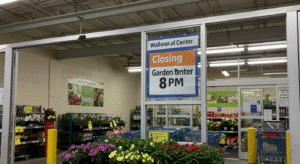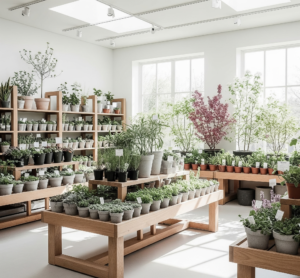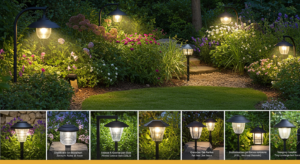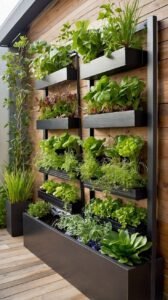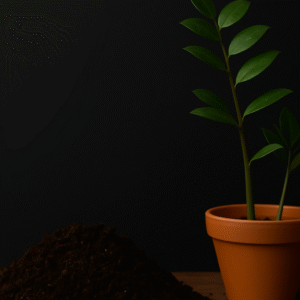How To Start Outdoor Garden

outdoor garden
Gardening goes beyond just planting a few seeds; it involves connecting with nature and improving the aesthetics of the environment around you. Everyone wishes to have a beautiful outdoor garden where they can grow vegetables and flowers of different colors. Moreover, gardening is a great way to relieve stress. The right kind of gardening, which involves physical activity, exposure to sunlight, and interaction with nature, can be beneficial for health, too. It helps relieve stress, enhances the air quality surrounding you, and provides fresh food. Starting a garden may seem daunting at first, but when you break it down into manageable tasks, it becomes an enjoyable journey for everyone. I’m here to guide you through each step, from finding the perfect spot for your garden to preparing the soil, choosing the right plants, and providing seasonal care. With this guide, you’ll have all the tools and knowledge you need to confidently embark on your gardening adventure.
Optimal Methods to Choose a Garden Spot
When determining the location of a garden, considerations such as balancing horticulture with the area are critical. At least six hours of direct sunlight is essential for optimum plant growth. Therefore, sunlight stands out as one of the key components during the planning stage. It is worthwhile to observe various parts of your yard over the different times of the day for several days and identify areas that receive consistent and abundant sunlight. Space balance can also refer to the patio or balcony where container gardening can be done. Since plants are kept in pots, they are movable and can be placed where they maximize sunlight. Exposure to wind stands out as another notable point since strong winds can be detrimental in many ways, such as drying out of soil, damaging delicate plants, and watering futile. Select a location that is somewhat hidden by fences, walls, or hedges, which can put more substantial barriers to the wind. The rot arising from overly saturated, wet, sandy soil means proper drainage is essential. Avoid standing water areas after rainfall and consider constructing garden beds on higher ground. While watering using a large hose or a watering can may take some time, being close to the water is very important. Positioning the garden where it can be easily seen from the house is also helpful, so care and maintenance can be performed often. A strategically chosen location benefits overall productivity and forms a strong base for a productive garden.

Understanding different types of soil and learning how to prep the ground will enhance the growth of your plants.
Soils containing sand tend to lose moisture quickly, but adequate nutrients must still be retained. Compacted clay subsoils might hold moisture but are difficult to penetrate with roots. Balanced soils made with sand, silt, and clay are best for most plants, and silty soils are also ideal. Silt soil is packed with nutrients and boasts excellent drainage without losing valuable minerals to make it rich. Before planting, a pH test and a nutrient content analysis may give clues as to which changes should be implemented. For basic at-home assessments, soil test kits can be purchased, or a sample can be sent to a nearby extension service for detailed analysis. If the soil is overly acidic or alkaline, lime or sulfur can be added to rectify the imbalance. Improving soil fertility holds equal importance. Adding organic matter, such as compost, aged manure, and mulch, should significantly improve the nutrient content and structure of the soil. It is advisable to loosen the soil with a garden fork or tiller before planting to improve aeration and root spreading. An excellent alternative for poor-quality soil is raised garden beds, which can be filled with high-quality soil and compost.
How To Choose The Right Plants For An Amateur Gardener
Any beginner gardener will tell you how important selecting the right plants for the garden is. It is best to start with simple plants, vegetables, or herbs. These essential crops, minding the production conditions, are much easier to maintain. Herchaceous vegetables, spinach, and kale are the perfect leafy greens, as they grow rapidly and withstand harsh climatic conditions. Moreover, gardeners do not require advanced skills to maintain root vegetables like carrots, radishes, and beets since they only need essential watering to thrive. Easy to care for and indigenous plants are the perfect choice because they are native to the area and require less time and energy to take care of. Through research, it is well known that companion planting crops encourages pest control and improves the overall health of the plants. Another technique to consider is plant allelopathy, where certain plants are grown together to achieve specific benefits. For instance, planting basil with tomatoes not only enhances the flavor of the tomatoes but also reduces the presence of other unwanted insects. If you try to choose the proper plants for your region and consider these techniques, your common gardening headaches will be minimized.
Gardening Tools and Supplies
Having the right equipment for the garden makes any work effortless. For example, something as simple as planting seeds or seedlings can turn into a battle with blisters, thorns, and dirt if proper gloves are not put on. Also, a nozzle or watering can will be required to hydrate the seeds and seedlings. Moreover, a hose is needed to trim overgrown and damaged leaves and branches and collect bits of debris using a rake. In addition, a home is essential for weeding and breaking up the soil.
The Use of Your Garden
Tilling the planting soil and setting the proper distance between the plants to achieve maximum light, air circulation, and nutrients for each plant is also critical for development. Watering the soil after sowing seeds to flood the newly formed cavities will aid germination. Large seedlings of young plants require special care in opening burial dresses above the root to minimize transplant shock, and isengaging the hooks while holding the root. Mulching serves the double purpose of protecting the soil surface around shrubs and lowering the temperature of the soil. By pruning these tools and monitoring and changing the surroundings, maintaining the plants can be easily facilitated over time.
Watering, Controlling Pests, and Fertilizing
While watering nutrients is essential for a plant’s development, under-watering and overwatering a plant pose issues equally. To help withstand the extreme weather, a plant needs to have deeper roots, which allows the plant to grow during deep watering. In addition, water, ng in the early mornings and late afternoons when evaporation is at its lowest, aids the plant in absorbing the water. Better application of fertilizer supplies essential nutrients, while composting organic fertilizers helps preserve the soil for extended periods. Pest control is another area that bothers gardeners, but many techniques can aid in guarding a lot of harmful insects. The prevention of an infestation can be done by using ladybugs and neem oil or by growing lavender and mint.
Your Garden’s Seasonal Care and Maintenance
Pruning, which gets rid of dead and excess branches, aids the plant in returning to its normal state. Other steps, like summer mulch and winter covering, are also done seasonally to maintain the garden’s health. With time, attempting to gradually expand the gardening area, experimenting with new specimens, and reflecting on prior failures, the level of mastery at gardening improves.
Conclusion
Achieving a beautiful garden can be an extremely gratifying milestone when undertaken step-wise. Given the right location, soil preparation, and ideal plant and plant care, anyone can grow a successful garden. Gardening is a long-term hobby that entails devotion, time, and vigor. The reward exceptionally exceeds the efforts put into considering the immense joy a flourishing garden brings to its caretaker. From growing a few herb pots to strategizing an extensive vegetable plot, relishing the journey is what matters most. The appropriate time to tend to gardening tools and sprucing up your outdoor area is now.
